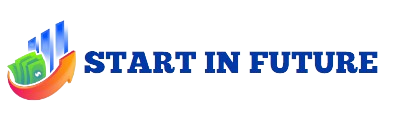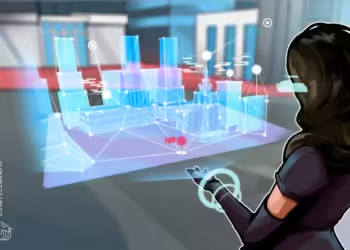Decentralized Finance (DeFi) and Non-Fungible Tokens (NFTs) have emerged as transformative forces. In the blockchain space, each disrupts traditional industries uniquely. As decentralized finance revolutionizes the financial landscape, NFTs are reshaping the art and entertainment industries. This article explores the intersection of DeFi and NFTs. Highlighting the synergies reshaping how we perceive and interact with finance and art.
Defi: Transforming Finance
DeFi, short for Decentralized Finance, refers to a movement that aims to recreate traditional financial systems with decentralized technologies, primarily blockchain. Unlike conventional finance, DeFi operates on a transparent and open-source blockchain, removing the need for intermediaries such as banks. Smart contracts, self-executing contracts with the terms written directly into code, automate financial processes, enabling a wide range of decentralized financial services.
Key aspects of DeFi include decentralized lending and borrowing, decentralized exchanges (DEXs), yield farming, and liquidity provision. This decentralized approach empowers users by providing financial services without relying on traditional institutions.
NFTs: Revolutionizing Digital Ownership
Non-fungible tokens, or NFTs, are unique cryptographic tokens representing ownership of a specific asset, often digital art, music, videos, or virtual real estate. Unlike cryptocurrencies such as Bitcoin or Ethereum, which are fungible and interchangeable, NFTs are indivisible and cannot be replicated.
NFTs have gained immense popularity in art, providing artists with new revenue streams and allowing collectors to own and authenticate digital assets. The ability to prove ownership and authenticity through blockchain technology has transformed how we value and trade digital content.
The Synergy: DeFi and NFTs Unite
The intersection of DeFi and NFTs is a natural evolution that brings together the strengths of both ecosystems. One of the key connections lies in the ability to use NFTs as collateral in decentralized finance platforms. This allows NFT owners to leverage their digital assets to access loans, providing liquidity without selling their prized possessions.
Moreover, decentralized finance platforms explore incorporating NFTs into yield farming and liquidity provision. NFT holders can stake their tokens in decentralized protocols and earn rewards, creating a symbiotic relationship between digital ownership and decentralized finance.
Projects like fractionalized NFTs are also emerging, allowing users to own a fraction of high-value NFTs. This democratizes access to premium digital assets and opens up new opportunities for decentralized finance products centered around fractional ownership.
Challenges and Opportunities
While integrating DeFi and NFTs presents exciting possibilities, challenges such as scalability, interoperability, and regulatory uncertainties remain. Scalability issues on blockchain networks can lead to high transaction fees and slower confirmation times, impacting the user experience. Additionally, ensuring compliance with evolving regulations is crucial for the sustainable growth of both DeFi and NFT markets.
Emerging Use Cases: DeFi-NFT Synergy
The collaborative potential of DeFi and NFTs extends beyond the financial realm, fostering new and innovative use cases. One notable area is the concept of “play-to-earn” gaming, where NFTs represent in-game assets or characters. These NFTs can be used as collateral in DeFi platforms, enabling gamers to unlock liquidity without selling valuable in-game items.
Additionally, integrating decentralized oracles in DeFi-NFT projects addresses the challenge of bringing real-world data onto the blockchain. This is particularly crucial for NFTs tied to physical assets or events, such as concert tickets or real estate. Smart contracts can utilize oracles to verify external information, enhancing the functionality and reliability of DeFi applications involving NFT collateral.
Furthermore, the composability of decentralized finance allows for the creation of decentralized autonomous organizations (DAOs) where NFT holders have voting power. This introduces a novel governance model where decisions about the development of digital assets or the direction of a decentralized project are influenced by the community of NFT holders.
Risks and Considerations
Despite the exciting prospects, integrating DeFi and NFTs introduces inherent risks that stakeholders must carefully navigate. Smart contract vulnerabilities, security breaches, and the volatility of both DeFi and NFT markets pose potential challenges. Participants must conduct thorough due diligence and adopt robust security measures to safeguard their assets in this rapidly evolving landscape.
Moreover, the legal and regulatory landscape surrounding NFTs and DeFi is evolving. Market participants must stay abreast of regulatory developments to ensure compliance with emerging frameworks. Collaboration with regulators and industry stakeholders can contribute to the responsible growth of the DeFi-NFT ecosystem.
Looking Ahead
The intersection of DeFi and NFTs represents a frontier of innovation, offering a glimpse into the decentralized future of finance and digital ownership. As technological advancements address current challenges, the synergy between these two disruptive forces is poised to redefine the landscape of both the financial and creative industries.
The collaborative potential of DeFi and NFTs opens doors to financial inclusion, creative expression, and community-driven governance. It is a testament to the transformative power of blockchain technology, pushing the boundaries of what is possible in the decentralized era.
Challenges and Collaborative Solutions
As the convergence of DeFi and NFTs accelerates, it is crucial to address challenges collaboratively. The scalability of blockchain networks remains a pressing concern, with high gas fees and slow transaction times impacting user experience. Ongoing research and development efforts are focused on scaling solutions such as layer 2 protocols and advancements in blockchain technology to alleviate these issues.
Interdisciplinary collaboration is key to overcoming challenges at the intersection of finance and art. Technologists, legal experts, artists, and financial professionals must engage in ongoing dialogue to shape regulatory frameworks, security standards, and best practices for the evolving DeFi-NFT space. This collaborative approach ensures a well-rounded ecosystem that balances innovation with responsibility.
The Future: Towards a Decentralized Renaissance
The intersection of DeFi and NFTs is not merely a trend. But a transformative force shaping the future of finance, art, and beyond. As decentralized technologies continue to evolve, so does the fusion of financial instruments. Digital creativity has the potential to unlock unprecedented opportunities.
The future holds promise for a decentralized renaissance where financial empowerment, creative expression, and community-driven collaboration converge—the ongoing experimentation and evolution at the crossroads. DeFi and NFTs will undoubtedly contribute to the broader narrative of blockchain’s impact on society.
Conclusion
The synergy between DeFi and NFTs is a dynamic journey that invites continuous exploration and adaptation. As these technologies mature, the collaborative efforts of diverse stakeholders will play a pivotal role in realizing their full potential of decentralized finance and non-fungible tokens, ushering in a new era of innovation and inclusivity.



















